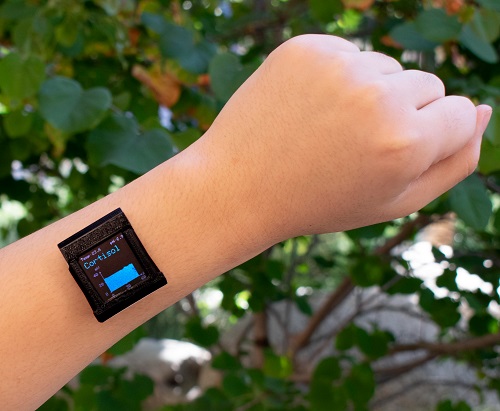The human body creates the hormone cortisol to battle mental stress, which functions as a natural antidote to the negative effects of high blood pressure, anxiety, and other diseases. Cortisol levels have traditionally been evaluated via intrusive methods such as blood sampling. Although this method aids in the diagnosis of certain disorders, it does not account for changes in cortisol levels over time.
A UCLA research team has now developed a timepiece that detects cortisol levels non-invasively and in real-time. All that’s needed is for the patient to sweat.
“I anticipate that the ability to monitor variations in cortisol closely across time will be very instructive for people with psychiatric disorders,” said Anne Andrews, a UCLA professor of psychiatry and biobehavioral sciences, member of the California NanoSystems Institute (CNSI) at UCLA and member of the Semel Institute for Neuroscience and Human Behavior. “They may be able to see something coming or monitor changes in their own personal patterns.”
A strip of specialized thin adhesive film captures minuscule amounts of sweat, measured in millionths of a liter, in the new smartwatch. Cortisol is detected by a connected sensor using modified DNA strands called aptamers, which are designed to fit a cortisol molecule into each aptamer like a key fits a lock. When cortisol binds to the aptamer, it changes form, causing electric fields at the transistor’s surface to shift.
“We determined that by tracking cortisol in sweat; we would be able to monitor such changes in a wearable format, as we have shown before for other small molecules such as metabolites and pharmaceuticals,” said Sam Emaminejad, an associate professor of electrical and computer engineering at the UCLA Samueli School of Engineering, and a member of CNSI. “Because of its small molecular size, cortisol diffuses in sweat with concentration levels that closely reflect its circulating levels.”
Emaminejad’s lab earlier presented a disposable version of the specialized adhesive film that allowed smartwatches to analyze molecules from sweat, as well as a device that induced small amounts of sweat even while the wearer was still. The sensors produced could be used to diagnose conditions like cystic fibrosis and to tailor medicine dosages.
As previously noted, hormone levels differ greatly from person to person, making it impossible for doctors to learn much from a single measurement. However, using a smartwatch to measure individual cortisol levels over time could alert wearers and their doctors to variations that could be clinically meaningful for diagnosis or therapy monitoring.













